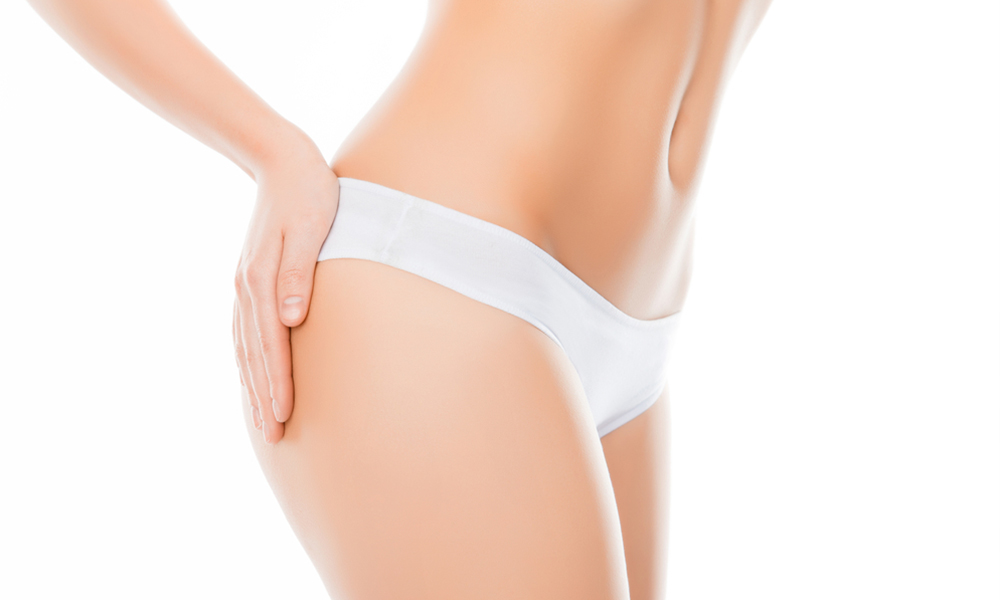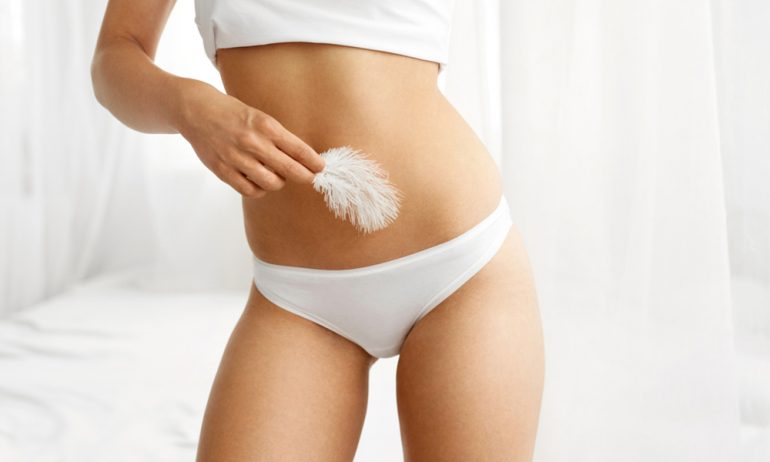Women hardly ever talk about it, but many regularly suffer from fungal infections or inflammation in their intimate area. Incorrect feminine hygiene is often to blame. In this article, we reveal the important points to remember and why less is often more.
A woman’s intimate area
This area of the body is particularly sensitive, so it’s important to treat it with care. Our skin has a pH of roughly 5.5. A woman’s intimate area, on the other hand, has a pH of 4.0 to 4.5. We therefore talk of this zone as being an acidic environment. In addition, lactobacilli are found in great numbers here too. Although most people tend to think of bacteria as something negative, these lactobacilli—or lactic acid bacteria—prevent virtually all other bacteria from growing in the vaginal area. The acidic environment and these lactobacilli even ensure that the equilibrium in the vagina is not upset by sperm or menstrual flow. Yet it’s a different story with most deodorants, body washes and the like.
Rules for feminine hygiene
These days, the problem is that there are far too many intimate hygiene products available. Whether it’s body washes, deodorants, sprays or creams for cleaning the intimate zone—the choice offered by health and beauty retailers is vast. Yet, usually, buying numerous products here to use in your feminine area is exactly what you shouldn’t be doing. As already mentioned, a woman’s intimate zone is an acidic environment with a very specific pH and some of these feminine hygiene products can upset the acidic environment and change the pH, making the intimate area susceptible to bacteria and infections. The bacteria that are present anyway in a woman’s intimate area can also attack the vaginal area when the acidic environment is disrupted. What’s more, the vagina actually cleans itself—other products aren’t usually necessary.
That’s why our first rule of feminine hygiene is to wash your intimate area ideally only with plain water. If you still think you need to use soap or body wash, you should opt for either a neutral, mild soap or a body wash containing lactobacilli. Look out for the acidity of the product in this case—it should have the same pH as your vagina, which is 4.0 to 4.5.
When it comes to cleaning your intimate zone, it’s not just what but also how that matters. The recommendation is usually simply to use your hand to wash your intimate area.
That’s why you should also follow our second rule of feminine hygiene: using your hand to wash your intimate area is more than adequate. If you use a flannel, for example, it can transfer microbes. This exposes your feminine area to unnecessary risks. However, if you do choose to use a flannel, it’s important to make sure you change it every day or use single-use wash-cloths.
Our third rule of feminine hygiene: please don’t wash too often. Once a day is plenty. Just do it every day when you have your shower.

Thanks to excessive washing, or simply due to a disturbance in the hormonal balance, many women struggle repeatedly with an uncomfortable feeling of dryness in their intimate area. Using an intimate personal lubricant can help with this, and that’s our fourth rule of feminine hygiene. Yes, you read that right. It may be something most people only associate with sex, but it can help protect your intimate zone and help with vaginal dryness. pjur med personal lubricants, for example, consist of high-quality ingredients that have been specially tailored to the sensitive feminine area. Silicone-based personal lubricants form a protective film on the surface of the skin and moisturise the intimate area. Water-based personal lubricants, on the other hand, are absorbed into the upper layers of skin, thus providing the necessary moisture in the intimate area.
Many women also find their feminine area is irritated by shaving. The problem with shaving is that the skin is irritated and then not properly cared for afterwards. Our fifth tip can put things right: the pjur med After Shave Spray. Not only is it unperfumed and alcohol-free so it doesn’t burn when applied, but it also contains added aloe vera and provitamin B5.
Besides the tips above, the following points can also help keep your intimate area healthy:
- It should go without saying, but it’s important to change your underwear every day.
- Wearing clothes that are too tight can also irritate your intimate area. So it’s worth giving your feminine area a bit of ‘breathing space’ 😉
- Bacteria also frequently enter the vagina when doing a ‘number two’. This is mainly due to women failing to wipe correctly. Always follow the ‘front to back’ rule—not the other way around!
- Change your tampons, sanitary towel etc. frequently during your period.
The consequences of incorrect feminine hygiene
Women who don’t follow the points laid out here can suffer from vaginal dryness, bacterial infections or vaginal yeast infections. This is because of the acidic environment, which is upset by incorrect feminine hygiene. Women suffering constantly with vaginal yeast infections or bacterial infections should always consult a doctor as these problems could be caused by something else not discussed here. Only a doctor will be able to clarify what the problem is. Otherwise, you should always follow the tips set out in this article to keep your intimate area as healthy as possible.
